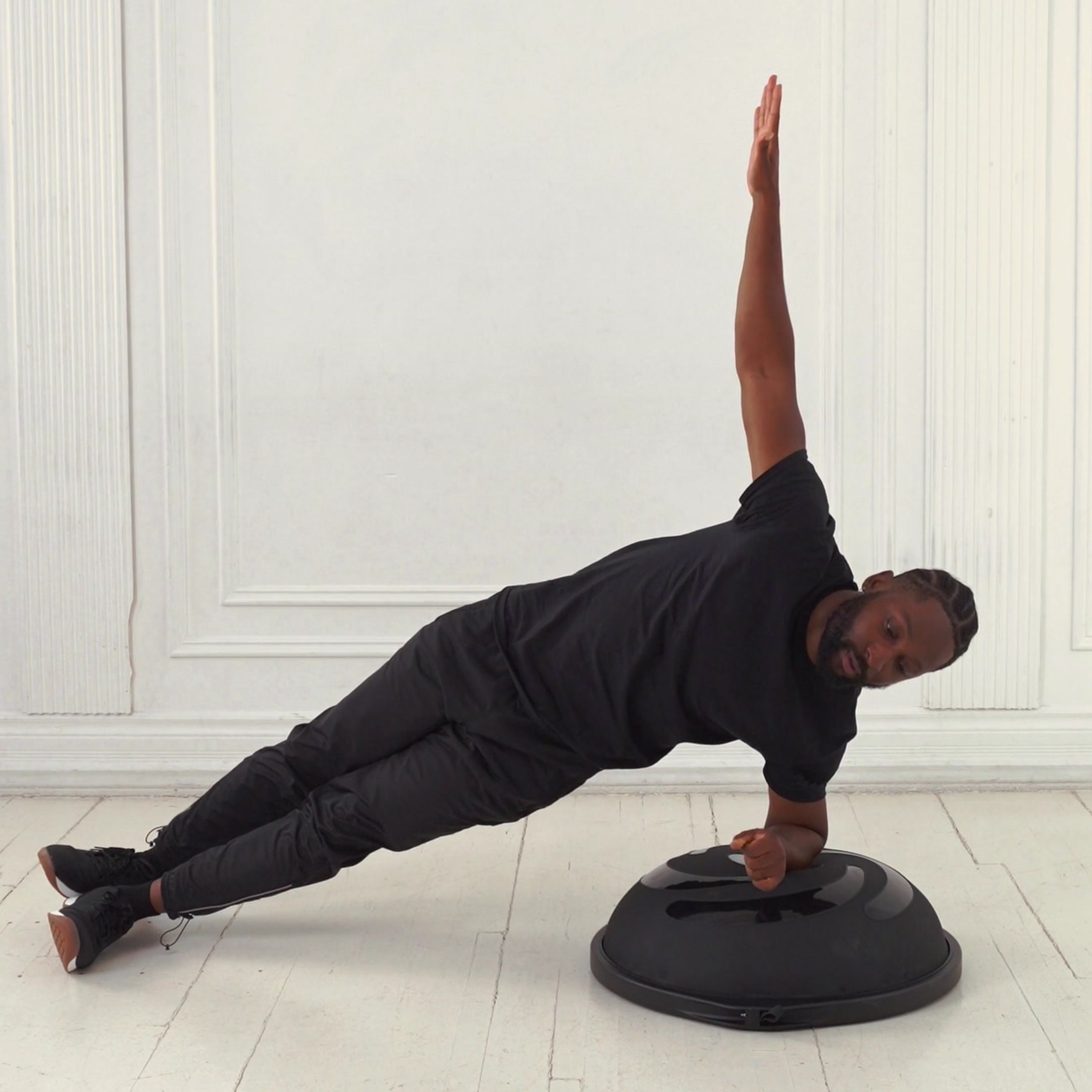Balance Trainer Plank
A plank variation on an unstable balance trainer that targets the core and stabilizers to build balance, stability, and endurance; performed isometrically for time with hands or feet on the dome.
About Exercise
Equipment
Balance Trainer
Difficulty
3/5 • Intermediate
Primary Muscle Groups
Abs, Obliques
Secondary Muscles
Lower Back
Popularity Score
5
Goals
Training Style
Setup Requirements
Requires Rack
No
Requires Bench
No
Requires Spotter
No
Space Needed
Small
Noise Level
Low
Muscle Breakdown
View Muscle MapAbs
10/10Rectus Abdominis, Transverse Abdominis
Obliques
9/10External Obliques, Internal Obliques
Glutes
7/10Glute Max
Shoulders
6/10Anterior Delts, Medial Delts
Lower Back
5/10Erector Spinae
Programming
Typical Rep Range
20-60 reps
Rest Between Sets
30-60 seconds • Adjust based on hold duration
How to Perform
Place the balance trainer dome-up on the floor. Position yourself in a high plank with hands on the center of the dome, shoulder-width apart, and feet extended back on toes.
- Engage core and glutes to lift body into straight line from head to heels.
- Brace abs to prevent hip sag or pike.
- Keep shoulders over wrists and elbows slightly bent.
- Maintain neutral neck by gazing at floor.
- Hold position steadily against instability.
- Breathe steadily while sustaining alignment.
Coaching Tips
Form Cues
- Body straight as board
- Core tight
- Shoulders stable
- Glutes squeezed
- No sag
- Breathe steady
Breathing
Inhale deeply through nose, exhale through mouth; brace core on exhale to maintain stability.
Tempo
0-10-0
Range of Motion
Full body alignment from ears through shoulders, hips, knees to ankles; no hip drop below or rise above straight line.
Safety
Safety Notes
- Ensure balance trainer is properly inflated
- Avoid if acute wrist or shoulder pain
- Stop if lower back strains
- Use knee variation if beginner
- Wear supportive shoes for foot placement
- Progress slowly to avoid falls
Spotting
Not typically needed; partner can provide verbal cues or light hand support under hips for beginners.
Common Mistakes
- Hips sagging toward floor
- Arching lower back
- Piking hips up
- Locking elbows
- Neck straining up
- Shaking uncontrollably from fatigue
When to Avoid
- Acute lower back pain
- Wrist injuries
- Shoulder impingement
Flexibility Needed
- Wrist extension to 90 degrees
- Shoulder flexion for alignment
- Ankle dorsiflexion for straight legs
Build Up First
- Master basic plank hold
- Familiarity with balance training
- Core bracing proficiency
Also known as
BOSU Plank, Unstable Surface Plank, Balance Board Plank
Found this helpful?
Share your thoughts or help us improve this guide.
Similar Exercises

Balance Trainer Side Plank
Balance Trainer
Obliques

Balance Trainer Plank Jacks
Balance Trainer
Abs

Balance Trainer Shoulder Tap Planks
Balance Trainer
Abs

Balance Trainer Leg Crossover Planks
Balance Trainer
Obliques

Balance Trainer Bird Dog
Balance Trainer
Abs

Balance Trainer Half Burpee
Balance Trainer
Quads, Glutes

Balance Trainer Side Crunch
Balance Trainer
Obliques

Balance Trainer Crunch
Balance Trainer
Abs

Balance Trainer Bicycle Crunch
Balance Trainer
Abs

Balance Trainer Mountain Climber
Balance Trainer
Abs


subscribe to our newsletter
Contact Us
hello@trainfitness.aiFind Us
130 Spadina Avenue, Toronto,
Ontario, M5V 0H4, Canada
©2025 All Rights Reserved
